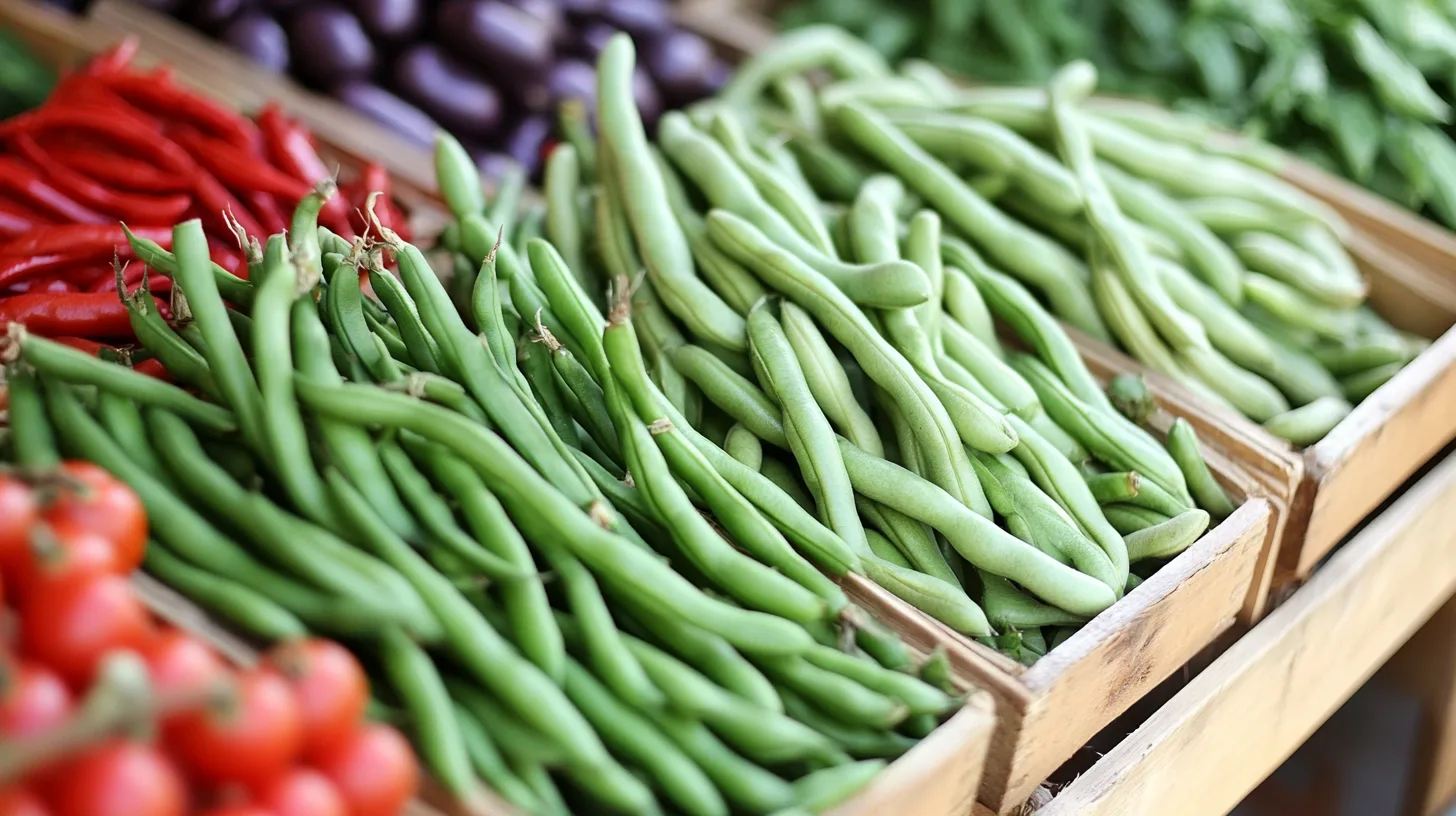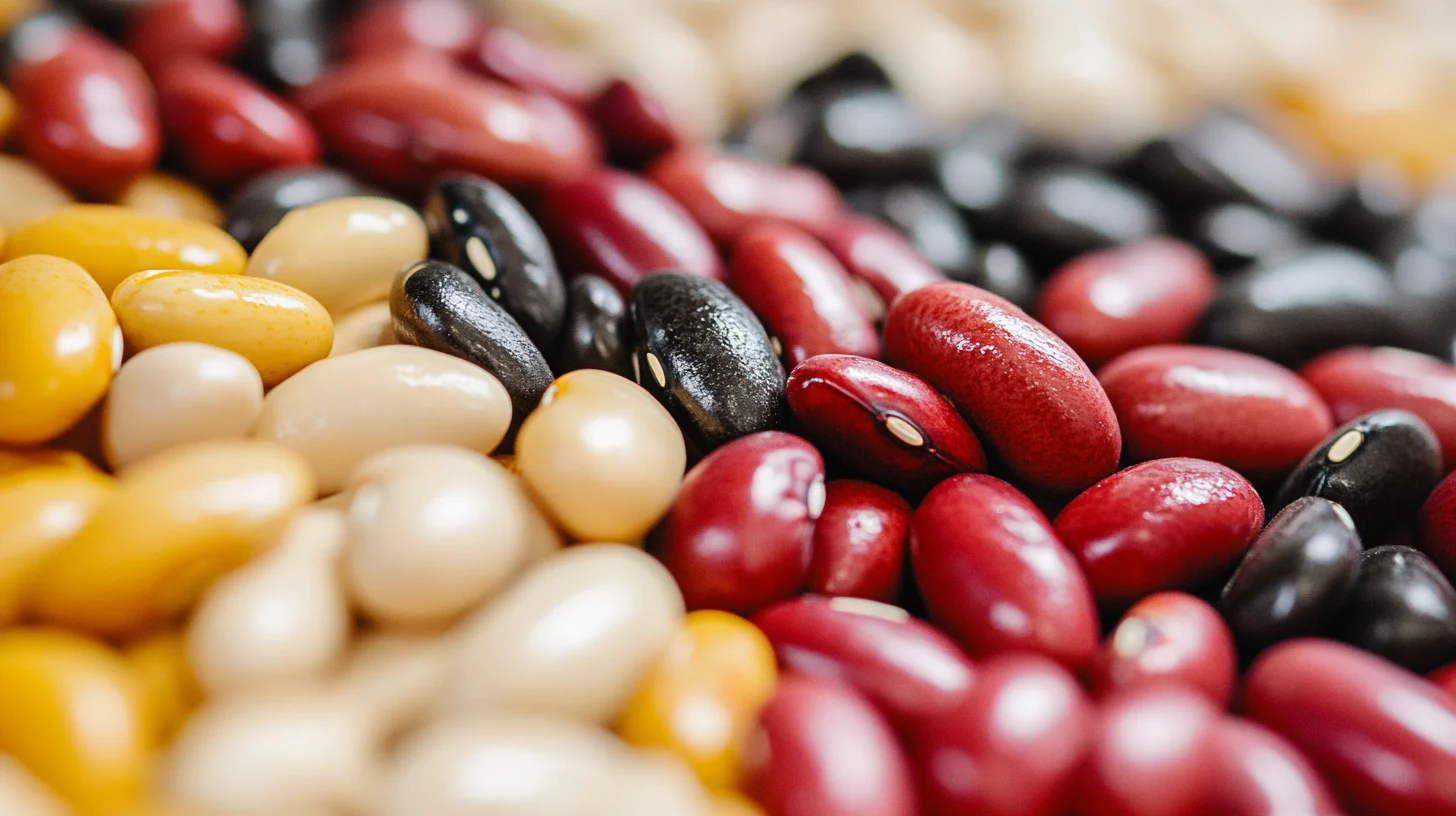Introduction
Beans are a staple food in many cuisines, offering versatility, affordability, and nutrition. However, their flavor can sometimes fall short without proper preparation and seasoning. If you’ve ever wondered how to make beans taste delicious?, you’re not alone. While beans are naturally mild, they serve as a blank canvas, ready to absorb flavors from spices, herbs, and other ingredients. In this guide, we’ll explore techniques and tips to transform ordinary beans into an unforgettable dish bursting with flavor.
Why Beans Can Taste Bland Without Proper Preparation
Beans, though rich in nutrients, have a naturally neutral taste. This mildness allows them to pair well with many foods, but it also means they require attention to seasoning and preparation.
Why Proper Preparation Matters:
- Neutral flavor profile: Without added ingredients, beans can lack depth and richness.
- Cooking method: Boiling beans in plain water often results in a bland, unexciting dish.
- Texture impact: Undercooked or overcooked beans can detract from their overall appeal.
To make beans taste delicious, focus on using the right cooking techniques and enhancing their flavor with complementary ingredients. Preparing beans thoughtfully ensures they shine as the star of your dish.
If you’re also looking for ways to boost other staple foods, check out What to Add to Boxed Pancake Mix for creative enhancement ideas.

Choosing the Right Type of Beans for Flavor
The type of beans you choose can greatly influence the flavor and texture of your dish. When considering how to make beans taste delicious?, selecting the right variety is the first step.
Popular Bean Varieties:
- Pinto beans: Creamy and versatile, perfect for Mexican or Southern-style dishes.
- Black beans: Earthy and slightly sweet, ideal for Latin and Caribbean cuisines.
- Kidney beans: Bold and meaty, great for chili and stews.
- Lentils: Quick-cooking and packed with a nutty flavor, suitable for soups and salads.
- White beans (Navy or Cannellini): Mild and creamy, pair well with herbs and olive oil.
Tips for Choosing Beans:
- Match the bean variety to the dish’s flavor profile.
- Use dried beans for a deeper, richer taste compared to canned ones.
- Experiment with heirloom bean varieties for unique flavors.
Selecting the right beans ensures a solid foundation for building a delicious dish.
Learn how ingredients like these can shine in a range of recipes by exploring What Ingredient Makes Granola Stick Together?.
Soaking Beans: Does It Enhance Flavor?
Soaking beans before cooking is a traditional step that often sparks debate. While soaking primarily reduces cooking time, it can also enhance the flavor and texture of your beans.
Why Soak Beans?
- Improved texture: Soaking helps beans cook evenly, resulting in a creamy interior without being mushy.
- Reduced bitterness: Soaking removes some of the natural compounds that can make beans taste bitter.
- Better flavor absorption: Pre-soaked beans are more receptive to seasonings during cooking.
How to Soak Beans:
- Overnight soak: Cover beans with water and leave them at room temperature for 8–12 hours.
- Quick soak: Boil beans in water for 2 minutes, then let them sit off the heat for 1 hour.
While soaking is optional, it’s a helpful step in how to make beans taste delicious?, especially for larger varieties like kidney or pinto beans.
For a similar principle in enhancing recipes, read What’s the Difference Between Hotcake and Pancake? to refine your techniques.

Adding Aromatics for a Flavor Boost
Aromatics are one of the easiest ways to elevate the flavor of beans. These ingredients infuse the beans with depth and complexity, making them taste rich and satisfying.
Common Aromatics:
- Onions: Add sweetness and a savory base.
- Garlic: Brings a bold, aromatic kick.
- Celery and carrots: Offer earthy and slightly sweet undertones.
- Bay leaves: Add a subtle herbal flavor that complements the beans.
How to Use Aromatics:
- Sauté onions, garlic, and other aromatics in oil before adding beans.
- Cook beans with whole aromatics in the pot, allowing their flavors to seep in.
- Discard bay leaves or whole vegetables after cooking for a smooth texture.
Using aromatics is a simple yet impactful technique for how to make beans taste delicious?, ensuring every bite is flavorful.
Enhance other recipes with aromatics as well, such as How to Spice Up Soup for bold, flavorful results.
Cooking Beans in Broth Instead of Water
One of the easiest ways to infuse beans with flavor is by cooking them in broth instead of plain water. This step transforms the beans from bland to flavorful without requiring additional effort.
Benefits of Using Broth:
- Richness: Broth adds layers of flavor that water cannot provide.
- Customization: Choose chicken, beef, or vegetable broth based on your dietary preferences and the dish’s flavor profile.
- Salt and seasoning: Many broths are pre-seasoned, reducing the need for additional salt.
How to Use Broth:
- Replace water with broth in a 1:1 ratio when simmering beans.
- For even more flavor, use homemade broth or stock.
Cooking beans in broth is a game-changer for those seeking how to make beans taste delicious?, as it infuses every bean with deep, savory flavor.
For an extra savory option, discover the secrets of broth-based dishes in Chopt Soup Recipe Tips and Variations.
The Role of Spices and Herbs in Making Beans Delicious
Spices and herbs are essential for creating flavorful beans. When considering how to make beans taste delicious?, these ingredients allow you to tailor the dish to different cuisines and flavor profiles.
Key Spices and Herbs:
- Cumin: Adds warmth and earthiness, often used in Mexican and Indian dishes.
- Paprika: Smoky or sweet varieties bring depth and a vibrant color.
- Chili powder: Adds heat and complexity for a bolder dish.
- Thyme and rosemary: Perfect for white beans and Mediterranean-inspired recipes.
- Coriander: Offers citrusy, floral notes for a unique twist.
Tips for Seasoning Beans:
- Add spices early in the cooking process to allow their flavors to meld with the beans.
- Taste and adjust seasoning after cooking, especially if using pre-salted broth or canned beans.
- Experiment with spice blends, like garam masala or Cajun seasoning, to match your dish’s theme.
By incorporating the right spices and herbs, you can ensure your beans are packed with bold and delicious flavors.

Using Smoked Meats to Infuse Rich Flavor
Adding smoked meats is a time-tested way to enhance the flavor of beans, making them richer and more complex. The smoky undertones from meats like bacon, ham hocks, or smoked sausage complement the earthy taste of beans while adding depth.
Best Smoked Meats to Use:
- Bacon: Sautéed bacon pieces add a salty, smoky flavor. Use the rendered fat to cook onions or garlic for even more richness.
- Ham Hocks: Simmered with beans, ham hocks infuse the dish with a savory depth.
- Smoked Sausage: Slice and cook with beans to add spice and texture.
Tips:
- Cook smoked meats before adding beans to render fat and enhance flavor.
- Balance smokiness with fresh herbs and acidic ingredients to avoid overpowering the dish.
Smoked meats are an easy way to elevate your beans, ensuring they’re hearty and flavorful.
Vegetarian-Friendly Ways to Add Depth to Beans
If you’re looking for meat-free ways to make beans taste delicious, focus on umami-rich and smoky plant-based ingredients. These add layers of flavor without compromising your dietary choices.
Top Vegetarian Options:
- Smoked Paprika: Adds a smoky depth, mimicking the effect of smoked meats.
- Dried Mushrooms: Soak in hot water to create a broth, then chop and add to beans for an earthy taste.
- Nutritional Yeast: Sprinkled in, it adds a nutty, cheesy flavor.
- Miso Paste: Stirred in at the end, miso adds savory umami tones.
Tips:
- Combine multiple ingredients like smoked paprika and mushrooms for maximum impact.
- Adjust seasoning gradually to avoid overpowering the dish.
These vegetarian-friendly additions ensure beans are rich, savory, and satisfying.
Find more plant-based inspirations in Vanilla Nut Granola Recipe for creative vegetarian sides.
How to Use Acidic Ingredients to Brighten Bean Dishes
Acidic ingredients can transform beans by balancing their earthy flavors and adding brightness. When you’re exploring how to make beans taste delicious?, acids like tomatoes, vinegar, or citrus are indispensable.
Popular Acidic Ingredients:
- Tomatoes: Add fresh or canned tomatoes early in the cooking process for a rich base.
- Vinegars: Apple cider, red wine, or balsamic vinegar provide a tangy finish when added sparingly.
- Citrus Juice: A squeeze of lemon or lime juice just before serving brightens the entire dish.
Benefits:
- Acids enhance natural flavors.
- They balance heavy or rich bean dishes.
Use acidic components sparingly, as too much can overpower the dish, but when used correctly, they add vibrancy to your beans.
Creating Creamy Textures for a Comforting Bean Dish
Creamy beans are the epitome of comfort food. Whether you’re making a hearty soup or a thick stew, achieving the right texture is key to making beans taste delicious.
Methods for Creaminess:
- Mash Some Beans: Mash a portion of the beans while cooking to release their natural starches.
- Add Purees: Blend cooked vegetables like carrots or potatoes and stir them into the beans.
- Incorporate Dairy: Stir in cream, milk, or plant-based alternatives like coconut milk for a velvety finish.
Tips:
- Balance creamy textures with acidity to keep the dish flavorful.
- Avoid over-mashing to maintain some texture.
Creamy textures make beans more indulgent, elevating their appeal.

Pairing Beans with Complementary Ingredients
Pairing beans with the right ingredients enhances their flavor and creates a more balanced dish. Whether you prefer simple sides or bold pairings, complementary ingredients are key to making beans taste delicious.
Ideal Pairings:
- Greens: Collard greens or kale add a bitter contrast that balances the richness of beans.
- Grains: Serve beans with rice, quinoa, or cornbread for a complete, satisfying meal.
- Fresh Herbs: Cilantro, parsley, or thyme add a burst of freshness.
Tips:
- Choose pairings that align with your dish’s flavor profile (e.g., smoked sausage for Southern-style beans or fresh herbs for Mediterranean beans).
- Don’t overcrowd the dish let the beans remain the star.
Strategic pairings elevate beans from simple to spectacular.
Common Mistakes That Can Ruin the Taste of Beans
Even small mistakes can impact the flavor and texture of your beans. Avoid these common pitfalls to ensure your beans always taste delicious.
Mistakes to Avoid:
- Skipping the Soak: Soaking reduces cooking time and improves texture.
- Overcooking: Beans that are too soft lose their structure and appeal.
- Underseasoning: Beans need plenty of salt and spices to shine.
- Using Plain Water: Always cook beans in broth or with aromatics for more flavor.
Tips:
- Taste frequently during cooking to adjust seasonings.
- Add acidic ingredients like vinegar or tomatoes late in the cooking process to avoid tough beans.
Avoiding these mistakes ensures your beans are consistently flavorful.
FAQs
What can I put on beans to make them taste better?
To make beans taste better, focus on adding complementary flavors and textures. Here are some popular options:
- Aromatics: Sauté onions, garlic, and celery to build a flavorful base.
- Herbs and spices: Add cumin, paprika, thyme, or bay leaves to elevate the dish.
- Acidic ingredients: A splash of vinegar or lemon juice brightens the flavors.
- Toppings: Garnish with shredded cheese, sour cream, or fresh cilantro for added depth.
Experimenting with these additions allows you to customize beans to your taste preferences.
How do you get the most flavor out of beans?
To maximize flavor, start by cooking beans with broth instead of plain water. Enhance the dish further by:
- Adding smoked meats like bacon or ham hocks for a rich, savory taste.
- Using aromatics such as onions, garlic, and carrots during cooking.
- Incorporating spices early in the process to infuse the beans with flavor.
- Finishing with acid like lime juice or tomatoes to balance richness.
These steps ensure the beans are flavorful from the inside out.
What makes beans delicious?
Beans are naturally mild but can be made delicious with thoughtful preparation:
- Proper seasoning: Salt, herbs, and spices bring out their natural flavor.
- Texture balance: Creamy beans with a slight bite make for a satisfying dish.
- Pairing ingredients: Combine beans with smoked meats, fresh vegetables, or grains to enhance their taste.
- Cooking method: Slow simmering allows flavors to meld and intensify, making beans truly irresistible.
The key is layering flavors throughout the cooking process.
How do you add flavor to canned beans?
Canned beans can taste bland out of the can, but you can quickly enhance their flavor:
- Rinse and drain: Remove excess sodium and canned liquid for a fresher taste.
- Sauté with aromatics: Cook beans with onions, garlic, and olive oil to infuse flavor.
- Add spices: Sprinkle in chili powder, cumin, or smoked paprika.
- Cook in broth: Simmer canned beans in chicken, vegetable, or beef broth to enrich their flavor.
With these techniques, canned beans can taste just as good as freshly cooked ones.
Conclusion
When it comes to how to make beans taste delicious?, the key lies in thoughtful preparation. From using smoked meats or umami-rich vegetarian options to adding acidity or creating creamy textures, there are countless ways to elevate the humble bean. Pair them with complementary ingredients and avoid common mistakes for consistently flavorful dishes. With these tips, you can turn simple beans into a star of your table, satisfying both your taste buds and nutritional needs.
